In a small dry corner of England, Aquagrain is creating a super-absorbent biodegradable hydrogel that could help crops grow in degraded lands. Aquagrain is a finalist for the 2024 Food Planet Prize.
NEEDHAM, United Kingdom –
In one of the smallest units in a sprawling industrial estate in the tiny English village of Needham Market, a scientist has been painstakingly refining a soil improving product. Made using animal carcasses, this hydrogel can hold enough water to transform degraded land into fertile soil. It may seem like the stuff of sci-fi, but Dr. Arjomand Ghareghani, the inventor of Aquagrain, has patented a technology that combines waste from abattoirs and farms with a super-absorbent hydrocarbon that acts as a reservoir for plants. It’s a product that could reduce the use of inorganic fertilizer and make it possible to grow food on parts of the planet that long ago became too dry and depleted to support traditional agriculture.
On a cold January day, Dr. Ghareghani meets me at the unit where he has been developing his patented technology. There’s no desert in England, but there are towns here in the country’s east that get less rain than arid Andalucia. The climate and chalky earth make the soil dry and sandy—the perfect place to test a polymer that addresses desertification. One area farmer who used Aquagrain during company trials immediately requested 35 tons for his 70 hectares of cereal fields. He described the difference between the field strips sowed with Aquagrain and those that weren’t as “like walking across a black and white zebra crossing”.
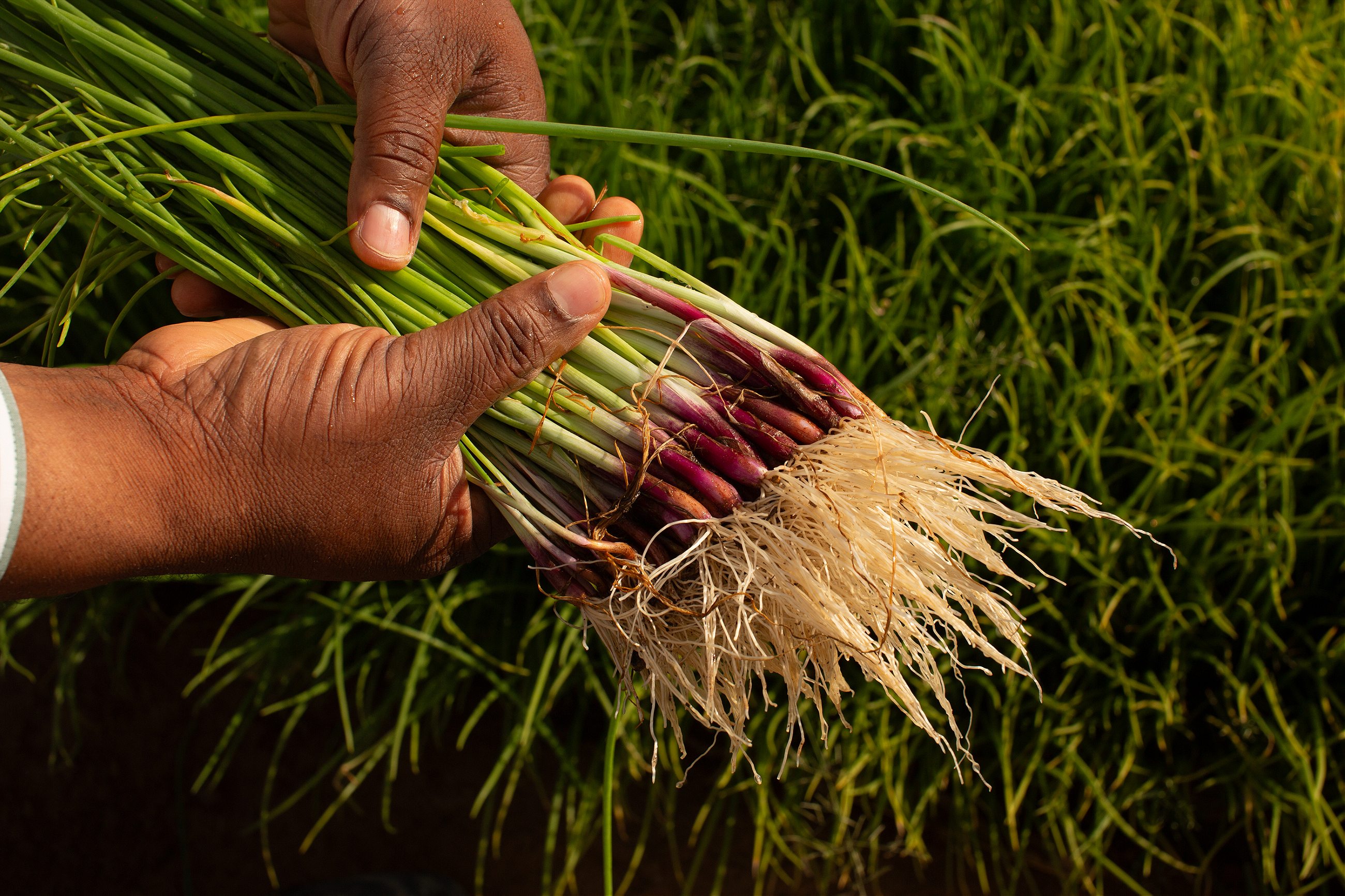
Desertification, or the degradation of drylands by unsustainable farming and overgrazing, ranks together with climate change and biodiversity loss among the greatest threats to the planet. It’s not necessarily a new problem – desertification has claimed multiple civilizations in human history, as far back as the Akkadians of Mesopotamia, who forged the world’s first empire more than 4,300 years ago only to disappear, researchers believe, during a 300-year drought that destroyed the farmlands they relied on to grow wheat and barley. Today, multiple factors have led to the increasing desertification of large farmland areas, from synthetic fertilizers to higher global temperatures and the growing frequency of droughts, with a catastrophic effect on food production. It has been estimated that 23 hectares of land are lost worldwide to land degradation every minute (more than the EU average farm size of nearly 17 hectares). That’s 12 million hectares per year.
But desertification is reversible. Some of the leading human causes of desertification are the practices and products used by farmers, including the heavy use of machinery, tillage, and chemicals, which can affect the structure of soil and its water content. Aquagrain acts as a water-holding sponge – a jelly-like substance filled with moisture and food that remains in the soil long enough for crops to grow, stopping nutrients from leaching out of the soil.
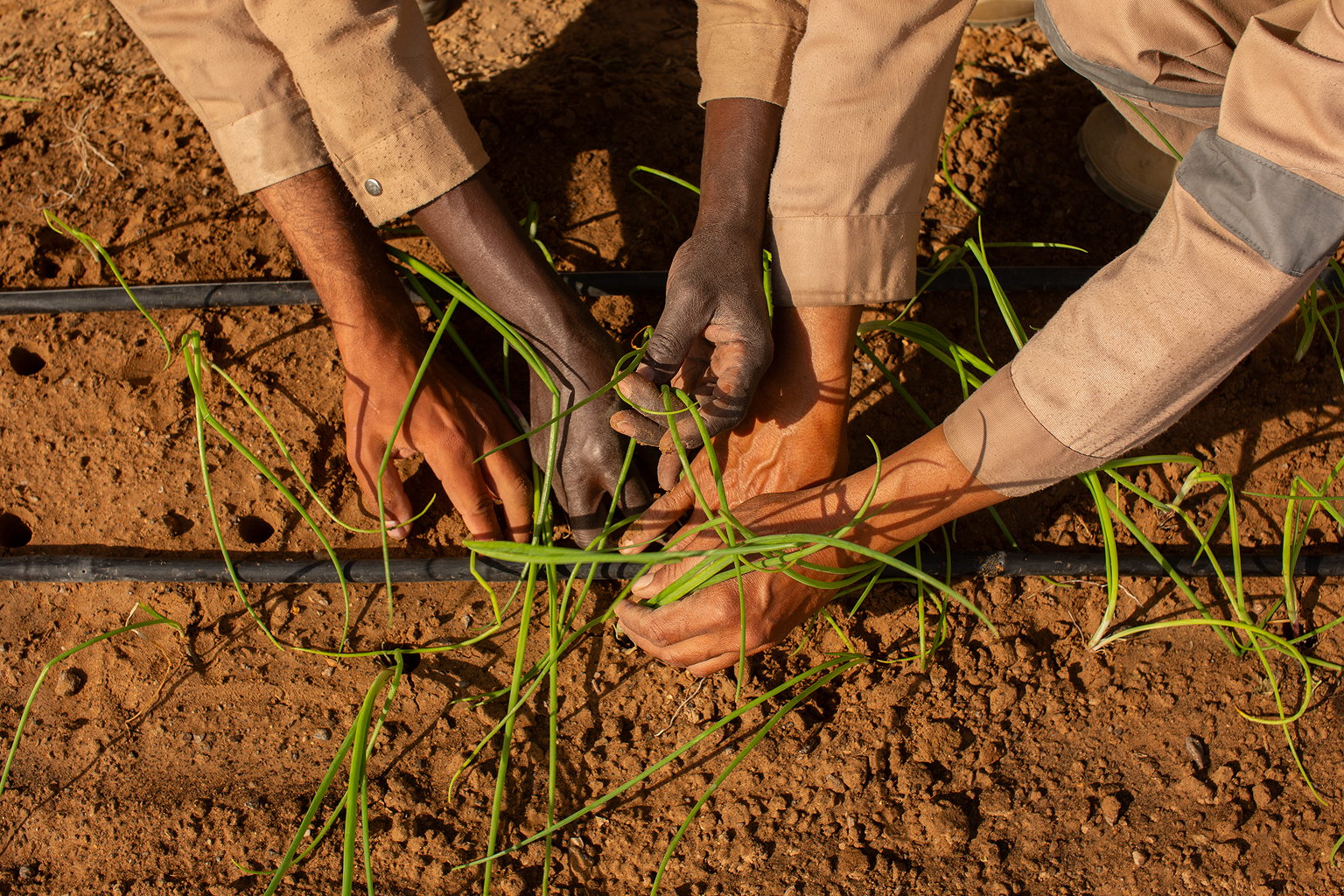
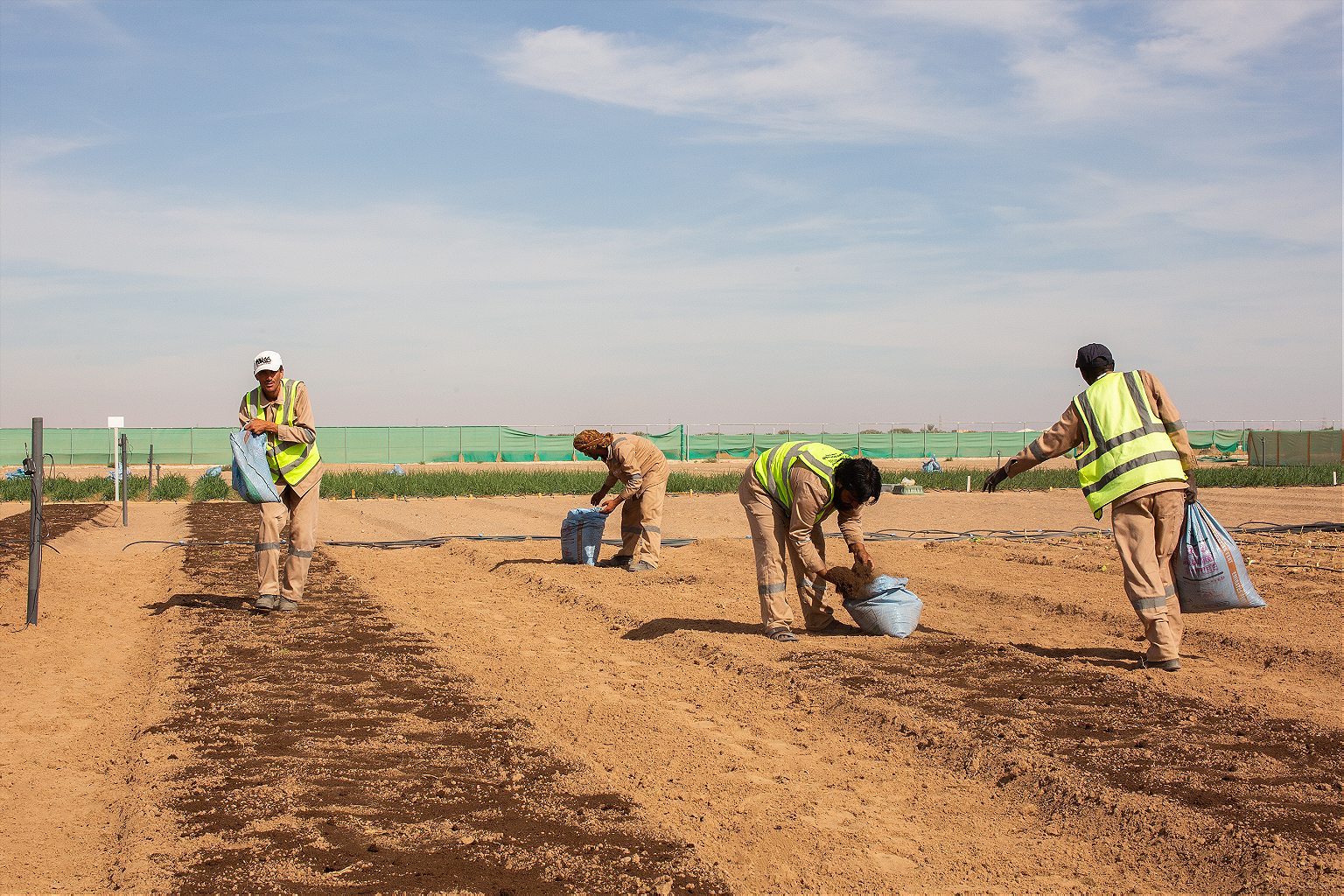
There’s just one problem: the production capacity at the industrial estate is only one ton per month. The next challenge for Dr. Ghareghani and Aquagrain is scaling up its production, an expensive process requiring significant investment. At the industrial estate, nothing suggests that this small unit could hold the key to turning the parched ground into fertile land. To the left is a shuttered flooring company. A car mechanic on the other side waves as Dr. Ghareghani turns the key to an unmarked white wooden door. Inside are three small, connected rooms: a kitchen, a lab, and an office. A long, complicated chemical equation is written across the whiteboard on one kitchen wall. Behind it, in the lab area, the counters are spectacularly clean, covered in glass test tubes, goggles, scales, and thermometers. Underneath the stainless steel unit, however, is a dirty brown bucket: a clue to the grislier side of the work. Behind a glass screen, in an adjoining unit, a small warehouse has been turned into a production lab with machinery used to vacuum dry the animal protein and turn it into the brown pellets that farmers can sow on their land. Here, Dr. Ghareghani explains he is free to work on developing the product in peace. It took him just three years to invent Aquagrain. That was almost ten years ago.
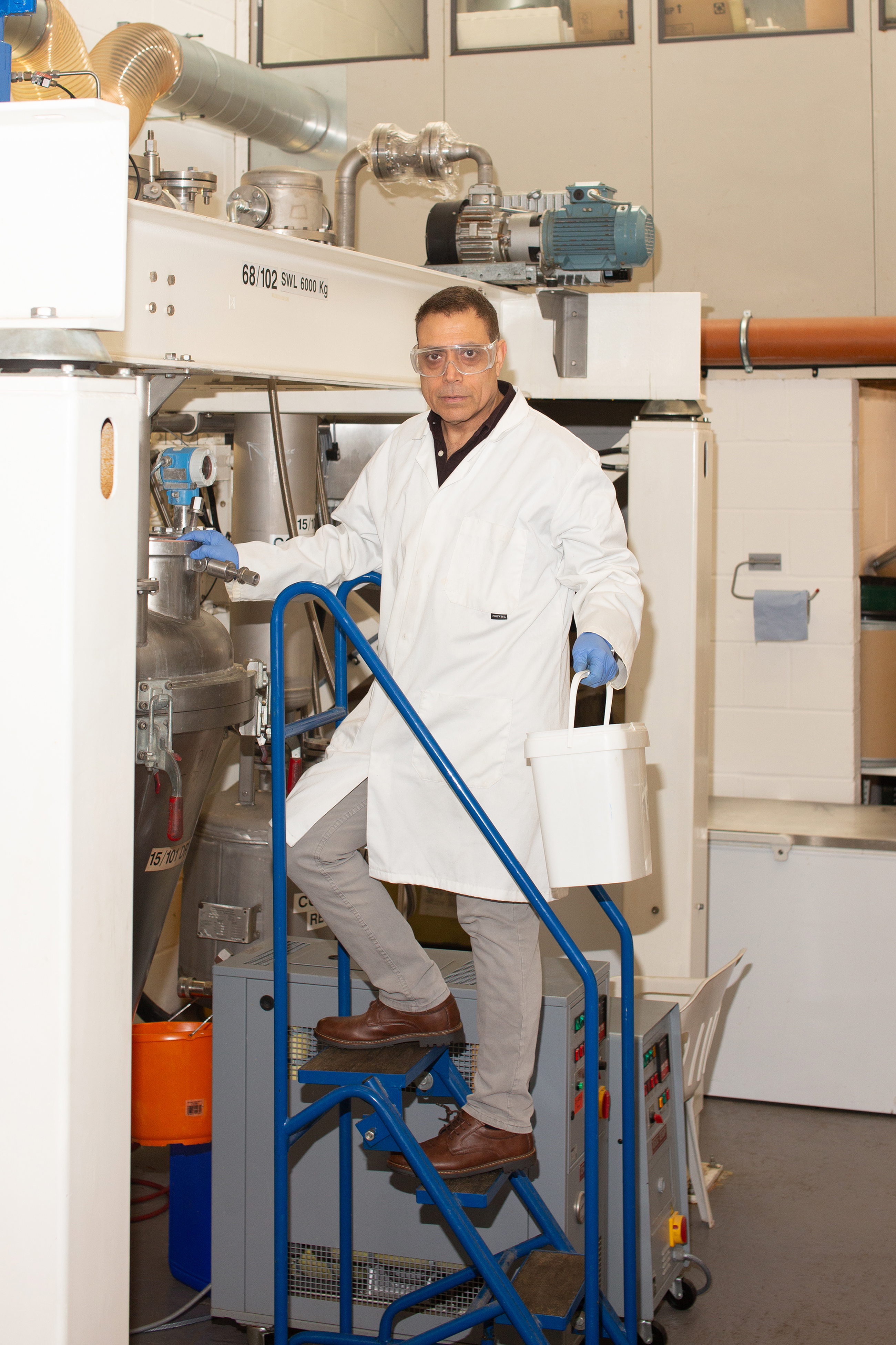
There’s just one problem: the production capacity at the industrial estate is only one ton per month. The next challenge for Dr. Ghareghani and Aquagrain is scaling up its production, an expensive process requiring significant investment. At the industrial estate, nothing suggests that this small unit could hold the key to turning the parched ground into fertile land. To the left is a shuttered flooring company. A car mechanic on the other side waves as Dr. Ghareghani turns the key to an unmarked white wooden door. Inside are three small, connected rooms: a kitchen, a lab, and an office. A long, complicated chemical equation is written across the whiteboard on one kitchen wall. Behind it, in the lab area, the counters are spectacularly clean, covered in glass test tubes, goggles, scales, and thermometers. Underneath the stainless steel unit, however, is a dirty brown bucket: a clue to the grislier side of the work. Behind a glass screen, in an adjoining unit, a small warehouse has been turned into a production lab with machinery used to vacuum dry the animal protein and turn it into the brown pellets that farmers can sow on their land. Here, Dr. Ghareghani explains he is free to work on developing the product in peace. It took him just three years to invent Aquagrain. That was almost ten years ago.

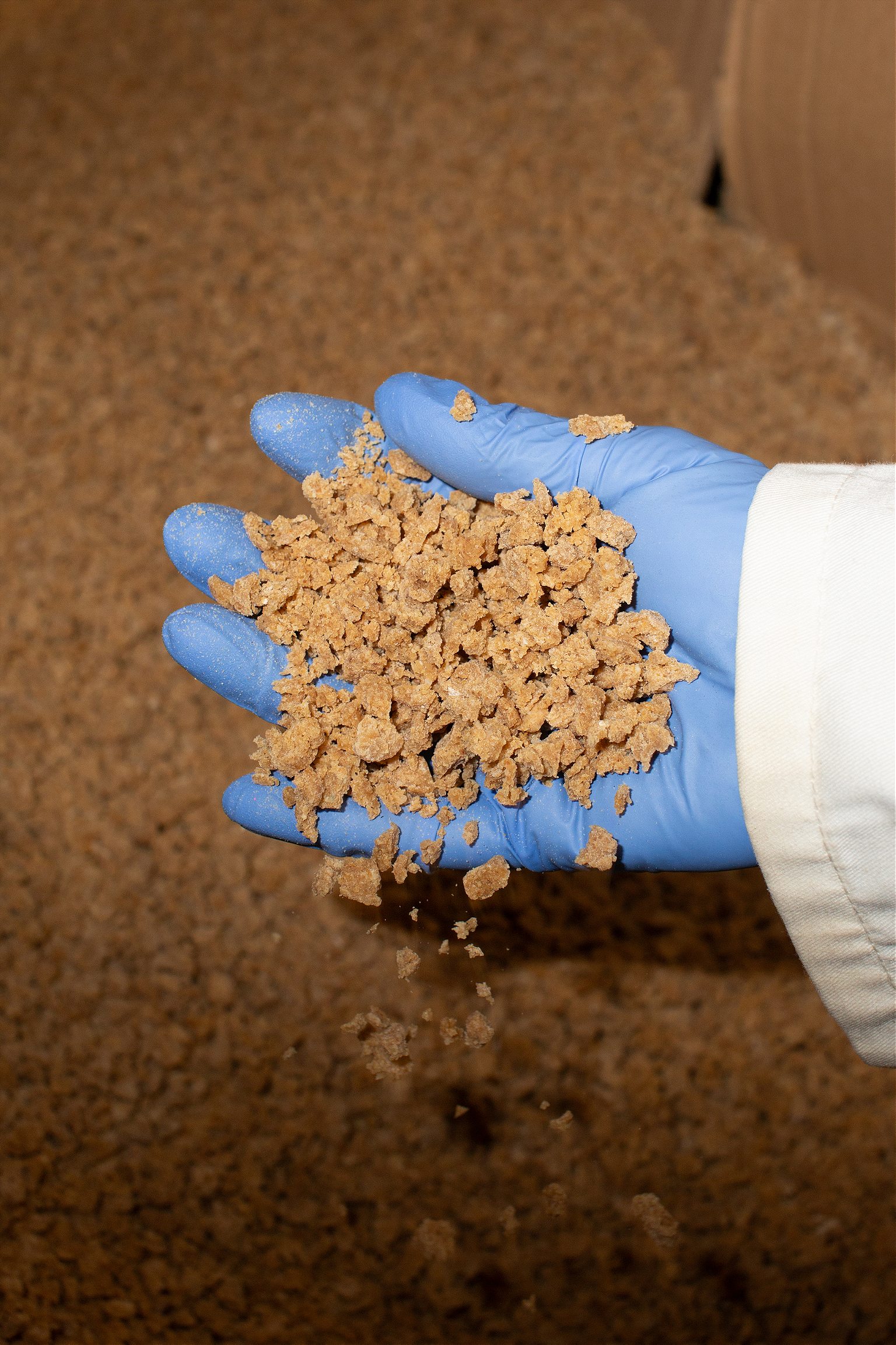
The following day, Dr. Gharenghani will fly to the United Arab Emirates to meet Paul Smith, who joined Aquagrain’s parent company 11 years ago as group head of development to prepare the company’s products for investment. It became harder to raise funds during the pandemic after international travel was restricted and the UK government diverted DfID (Department for International Development) funding from Innovate UK, the UK’s national innovation agency. Aquagrain might have been invented in England, but it has been forced to look further into the field for investment. Smith is currently running a pilot project worth €2.3 million ($2.5 million) in Abu Dhabi, supported by a €25 million ($27 million) R&D fund owned by ADQ, an Abu Dhabi-based investment and holding company.
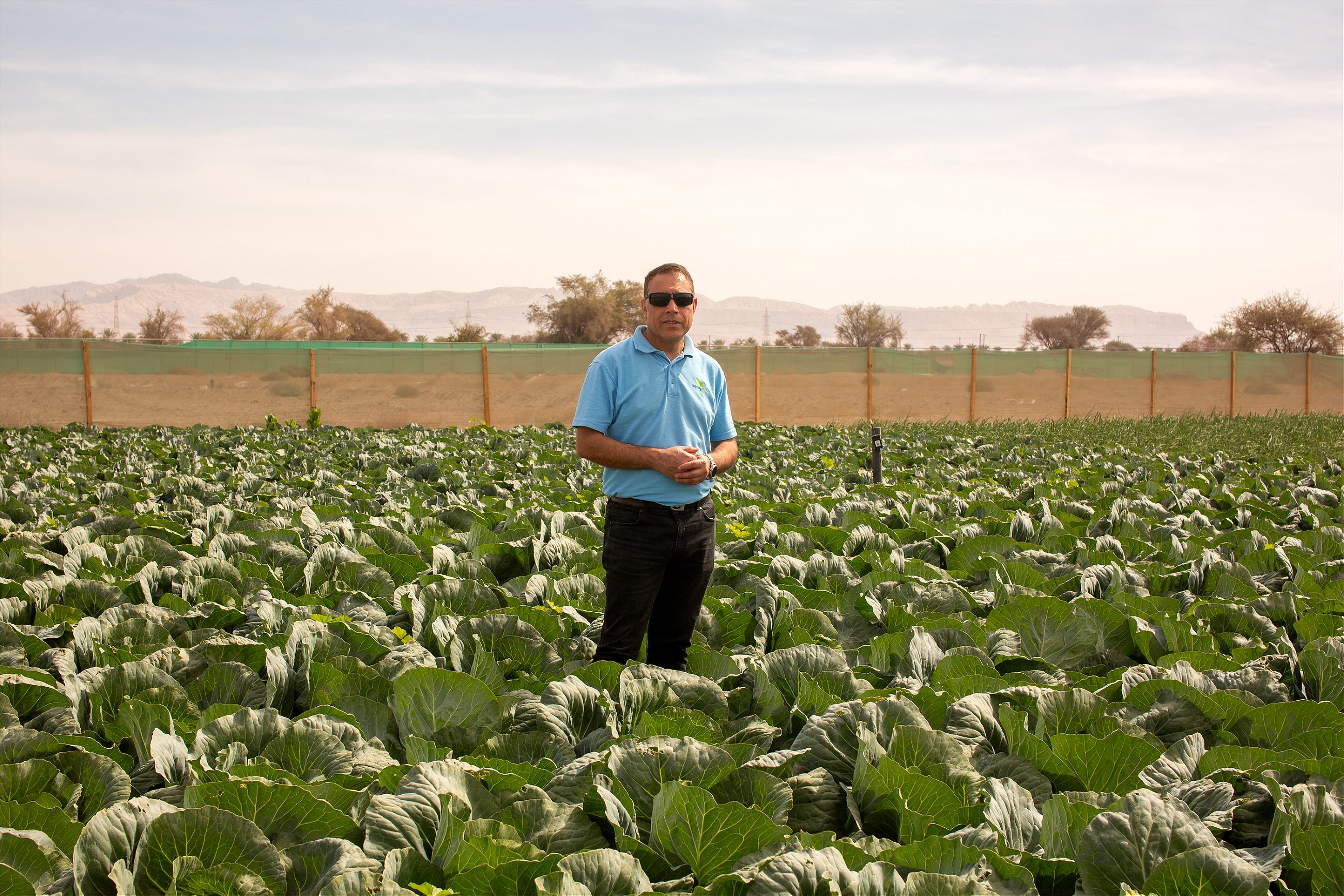
The UAE, one of the hottest and driest countries in the world, has been investing in inventions such as vertical farming and climate-resilient crops to grow its produce since the 2008 financial crisis when an export ban on rice from India contributed to panic buying and food price inflation. The federal government there hopes that half the food Emiratis consume will be produced locally by 2050 (compared to just 20 percent today), insuring it against further food shocks as more frequent weather events hit supply chains for everything from rice and wheat to herbs and flowers.
Aquagrain has the potential to solve multiple problems at once: reversing desertification, reducing the need for synthetic fertilizers that could advance degradation, and—a perhaps overlooked environmental challenge—reusing abattoir waste. “In some developing countries, dead animals are dumped in the desert or sent to landfills, which can generate methane or contaminate groundwater,” Smith says.
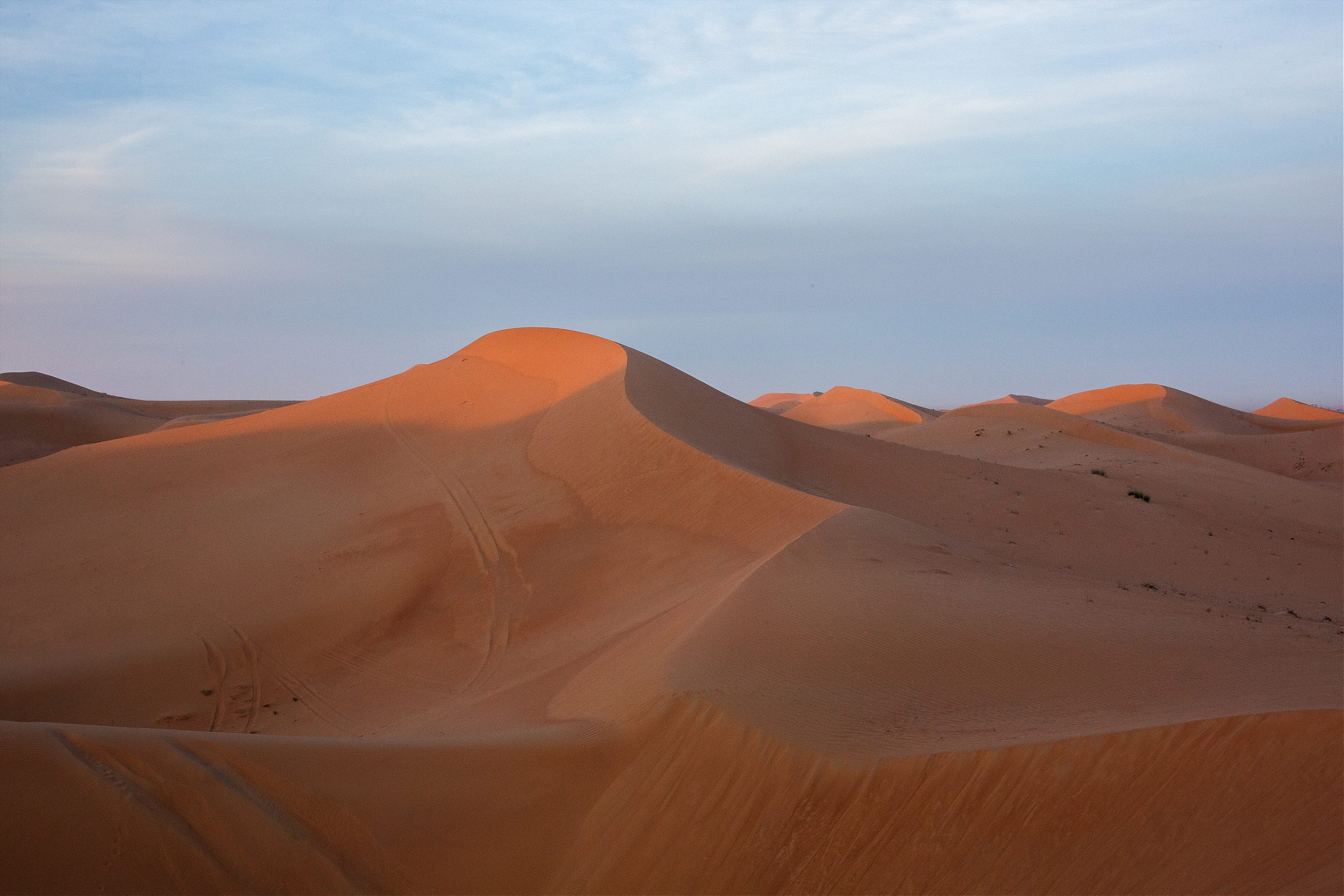
Smith foresees applications across the globe, from Australia to California, as farmers seek to comply with water authorities demanding that they cut down on their abstraction from rivers – Aquagrain reduces the moisture needed to grow crops by holding water 30 times its mass and binding the soil. Company trials show it cuts irrigation and reduces the necessary fertilizer by up to half. Already, Aquagrain is working with interested parties, from farmers facing desertification in Nigeria to UK supermarkets wanting to reuse fish waste to grow food and flowers. In Nigeria, Professor Adnan Aminu, an agronomist and bio-science engineer, is working in parts of the country where farmers are abandoning their lands completely because the soil fertility has declined to such a degree it is no longer possible to grow crops. Professor Aminu, who comes from a family of farmers and owns his land, has been running Aquagrain trials with students as part of their studies at Bayero University Kano in northwestern Nigeria. “Farmers are losing their livelihoods, that’s why we are pushing on regenerative agriculture principles in the country. And the use of organic minerals like Aquagrain is one part of this [solution],” Professor Aminu explains. In January 2022, Professor Aminu tested Aquagrain on maize and amaranth. The results were remarkable: Using a medium amount of Aquagrain gave them yields over 180 percent higher than in trials without fertilizer. While the cost of Aquagrain is prohibitive for farmers growing domestic produce like cassava and sorghum, Professor Aminu envisages its usage on crops grown for export, such as organic groundnuts and hibiscus, which can command a much higher market price.
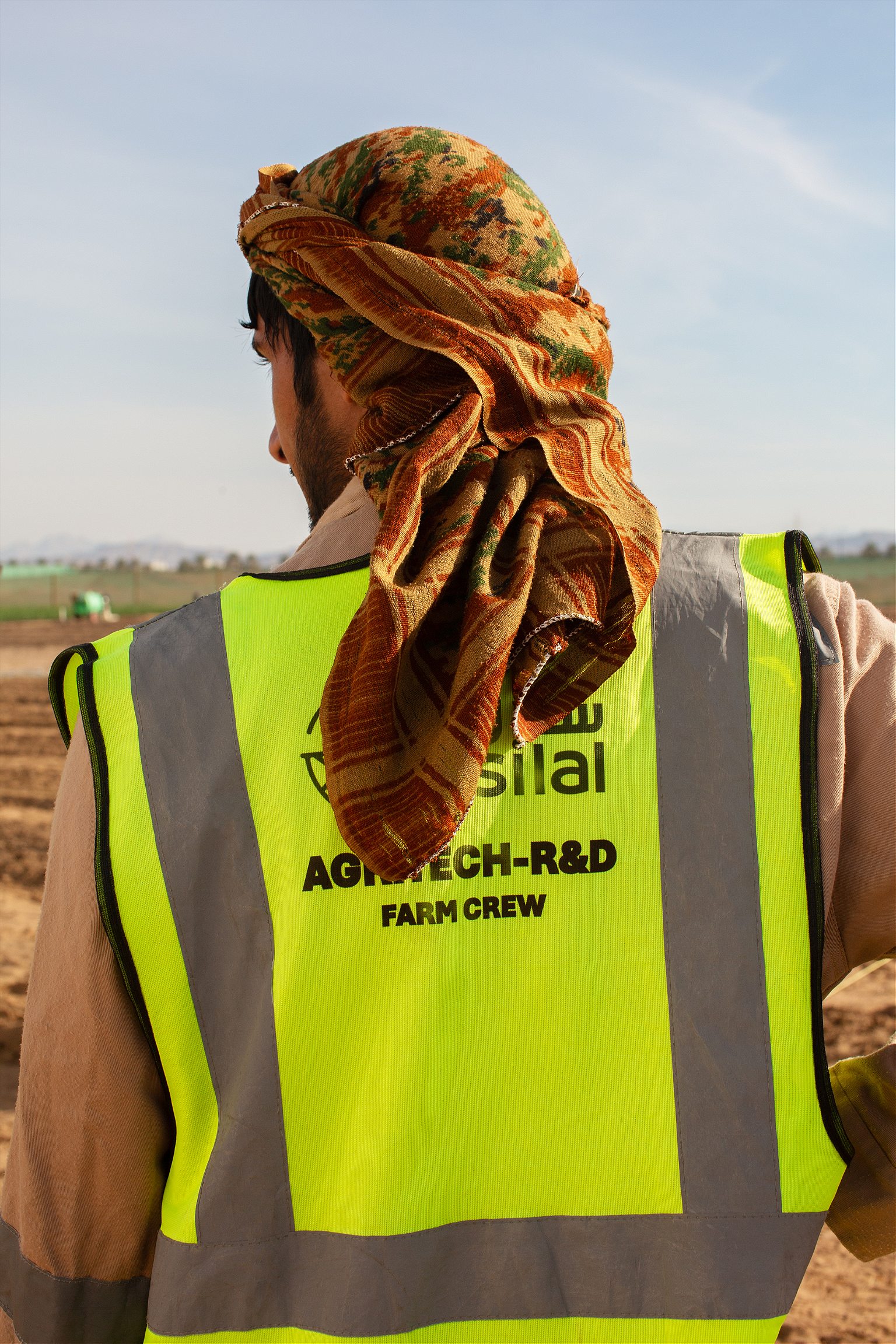
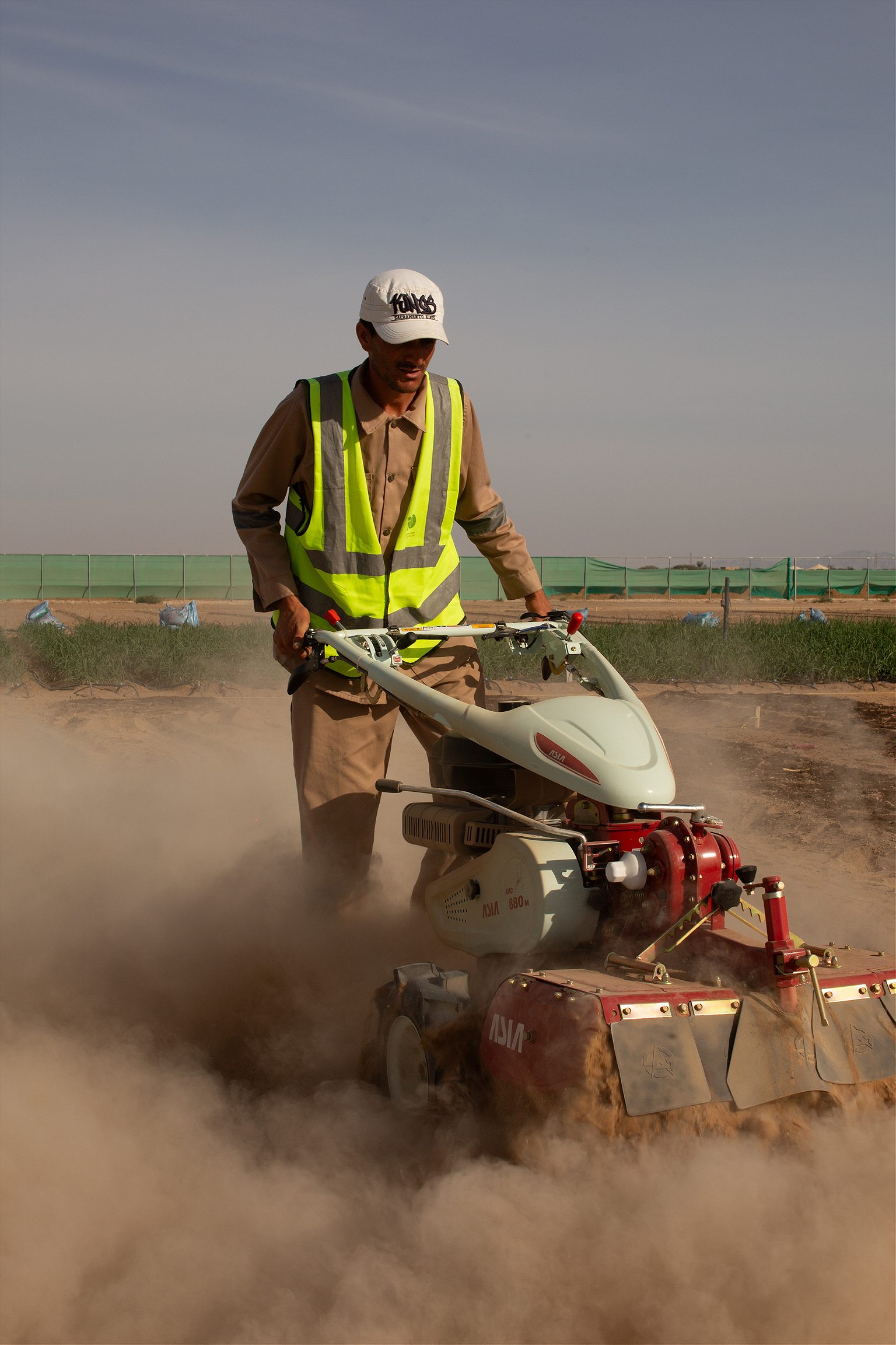
“At the industrial unit in Needham Market, Dr. Ghareghani opens a huge white sack of brown grain that smells curiously close to dog food. It’s the remnants of animal carcasses from farms and abattoirs after they have been rendered and any pathogens removed. Dr. Ghareghani combines this product with a super-absorbent polymer that biodegrades in the soil after it has been used for a single crop cycle, leaving nothing but organic matter. Behind the machines, he opens a chest freezer to reveal a cardboard box full of an icy mass of pink fish skeletons. It’s a delivery from a major UK supermarket chain called Morrisons, hoping to cut down on waste from its fish factories in the northeast. Dr. Ghareghani has been working on a bespoke version of Aquagrain that is ready for Morrisons to trial later this year, turning fish waste into fertilizer for ornamental plants and herbs.
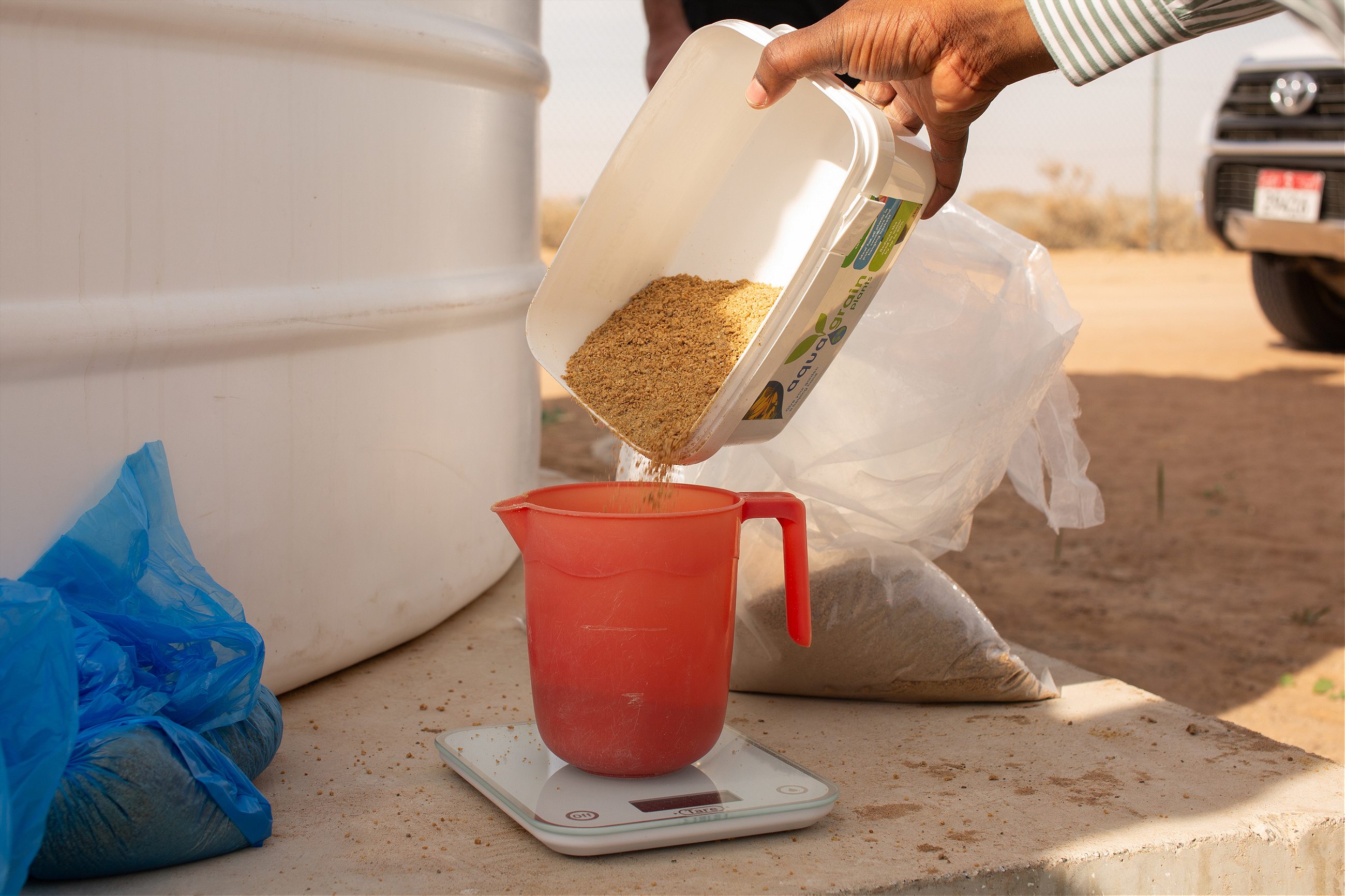
Dr. Ghareghani is hopeful that the trials in the UAE could increase production of Aquagrain. The company is already in talks with neighboring countries to export its technology. The UN estimates that every year rising tensions over natural resources and the forced migration of farmers. “A project like this, which can reverse that process, would make a massive difference,” he says.